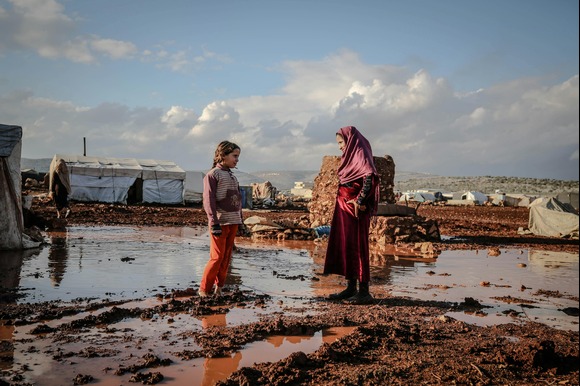
Photo by Ahmed akacha
The death toll from relentless monsoon floods and landslides in Pakistan and Pakistan-administered Kashmir continues to climb rapidly, with at least 307 people confirmed dead, authorities have reported.
The worst-hit area is the mountainous Khyber Pakhtunkhwa province in north-western Pakistan, where disaster management officials have recorded the highest number of fatalities. The monsoon-triggered devastation has also led to the destruction of at least 74 homes, while a rescue operation ended in tragedy when a military helicopter crashed in the region, killing all five crew members on board.
In addition to the loss of life in Khyber Pakhtunkhwa, nine people have died in Pakistan-administered Kashmir, and five more fatalities have been reported in the northern Gilgit-Baltistan region, according to government figures.
Authorities have declared several areas in north-western Pakistan as disaster zones, with forecasters warning that heavy rainfall is expected to continue until at least 21 August. The impact of the ongoing downpours has been described as catastrophic by survivors.
In the town of Buner, Azizullah, a resident, told AFP news agency that the floods arrived with apocalyptic force.
“I heard a loud noise as if the mountain was sliding. I rushed outside and saw the entire area shaking, like it was the end of the world,” he said.
“The ground was trembling due to the force of the water, and it felt like death was staring me in the face.”
The helicopter that crashed was en route to Bajaur, a region near the Afghan border, to assist with flood relief efforts. Chief Minister of Khyber Pakhtunkhwa, Ali Amin Gandapur, confirmed that the crash was due to severe weather conditions.
In Bajaur, photos released by AFP captured scenes of despair, with mourners gathered around multiple shrouded bodies. An excavator was seen clearing mud and debris from the hillside in a desperate search for more victims. In response, Khyber Pakhtunkhwa has declared a day of mourning.
Across the border in Indian-administered Kashmir, rescuers continue to recover bodies from debris after a flood swept through a Himalayan village on Friday, killing at least 60 people and washing away many more.
The annual monsoon season, which runs from June to September, delivers around three-quarters of South Asia’s total yearly rainfall. While essential for agriculture, it also brings frequent flooding and landslides. This year’s monsoon has already claimed over 300 lives across the region.
In July alone, the eastern province of Punjab — home to nearly half of Pakistan’s population of 255 million — experienced 73% more rainfall than the same period last year. The province also recorded more fatalities during this year’s monsoon than in the entirety of the previous season.
Experts point to climate change as a key driver of increasingly frequent and intense weather events in the region. Northern Pakistan, which contains some of the highest concentrations of glaciers outside the polar regions, is particularly vulnerable. These glaciers are rapidly thinning and retreating due to global warming.
As the ice melts, it loosens rocks, soil, and other debris, increasing the likelihood of landslides when combined with heavy rainfall. Though the precise causes of the most recent floods and landslides are still being investigated, glaciologists confirm that glacial melt is a contributing factor.
With more rain on the horizon and the terrain already dangerously unstable, authorities fear the situation could worsen before it improves. Rescue and relief efforts continue amid growing concern for those still at risk in remote and hard-to-reach areas.




